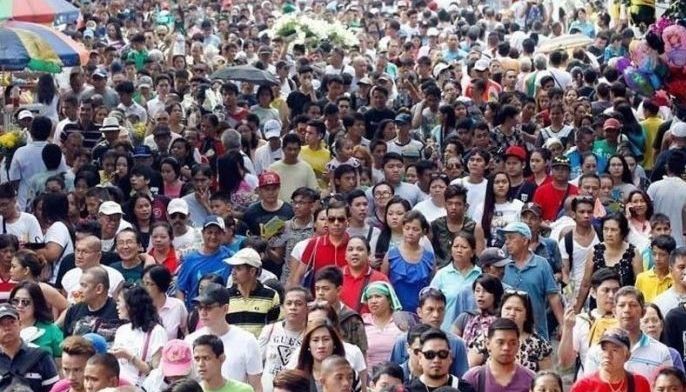MANILA, Philippines — The country’s population growth decelerated by 0.21 percent, dipping to 1.52 percent in the latter half of this decade from the 1.73 percent between 2010 and 2015, the Commission on Population (PopCom) said yesterday.
With these figures, PopCom said the Philippine Statistics Authority has projected that by July 2020, there would be 108.7 million Filipinos – 1.2 million lower than the PSA’s earlier estimate of 109.9 million.
PopCom executive director Juan Antonio Perez III noted that the projected increase in population between 2019 and 2020 is about 1,483,828, representing
an annual increase of 1.38 percent.
“Certain segments of the populace are contributing to the decline, particularly the 0-to-4 years old group, which is showing a 1-ppt drop from 11 percent in 2010 to 10.12 percent in 2020,” he said.
He added that the “0-to-14 age group will see a greater decrease of almost four percent from 34 percent in 2010 to 30.14 percent in 2020.”
Perez underscored that “at the opposite end of the spectrum, the growth is seen to be occurring in the older age groups, with 70.3 million working-age Filipinos comprising 64 percent of the population. At the start of the decade, they were only at 62 percent.
“Filipinos 60 years and older are also increasing in number and will grow to 9,686,762 in 2020, constituting 8.8 percent of the population. With a growth rate of more than four percent between 2015 and 2020, the seniors’ numbers are growing at a faster rate than other age groups,” he added.
Almost two out of every five Filipinos, or 38.7 percent, will be residing in the mega-region of Central Luzon, the National Capital Region and Calabarzon at the start of the new decade, with almost half of the population growth between 2019 and 2020 occurring in the same three areas.
On the other hand, most localities from the Visayas and Mindanao will have growth figures below the national average of 1.52 percent.
According to Perez, the recent population figures from PSA are a welcome development as it is lower by over one million than the former’s initial projection. It was earlier estimated that the number of Filipinos would surpass 110 million by 2020.
“We welcome the new information from the PSA – proof that our nationwide efforts on reproductive health as well as family planning (FP) are yielding positive results, as they are steadily being embraced by Filipinos,” he maintained.
But Perez warned against complacency despite the lower projection next year.
“We should not fall into complacency. We should keep in mind that our country still has one of the highest population growth rates in the ASEAN region,” he said.
He claimed that there are still lingering issues – management of limited resources in the face of climate change, unrestrained internal migration leading to congestion in urban areas, as well as the disturbing rise of adolescent and teenage pregnancies nationwide, among others – that must be addressed as the new decade comes. “We still have a lot of work ahead of us with regard to population management and family planning. It would still take a comprehensive approach that links government efforts to non-government organizations and private sector,” he added.
Perez maintained such an approach should allow population programs to reach every community in all 42,000 barangays nationwide.


